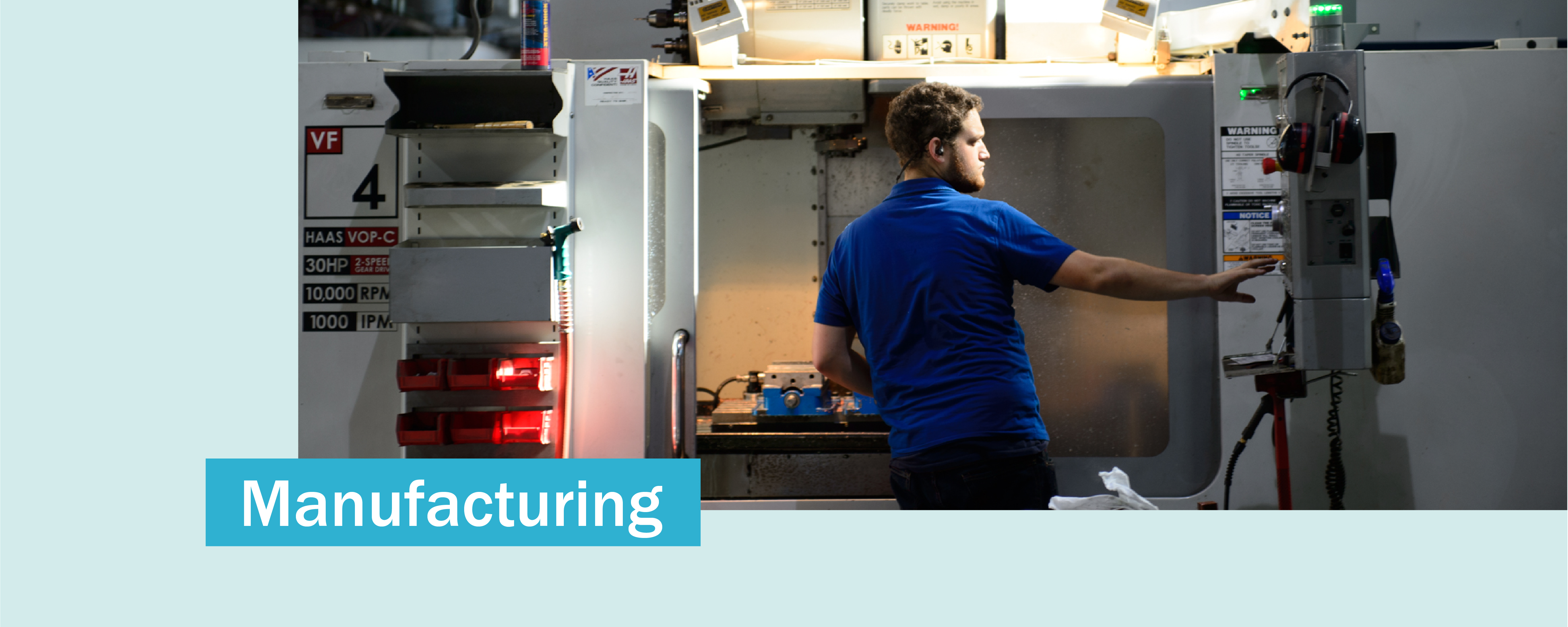Bringing jobs to people, and people to jobs
As part of an ambitious economic development strategy, LISC is working to bring industrial jobs back to urban and rural communities, while also connecting workers to the technical training and credentials they need to take advantage of them.
The implications, for both individuals and employers, are significant. There are nearly 500,000 unfilled manufacturing jobs across the country, and 71 percent of employers in the sector say their inability to attract enough qualified workers is their top concern. In fact, in 2018, manufacturing jobs grew more than in any year since the late ‘90s.
“One of our goals is to help bridge the disconnect between a strong national jobs outlook and people who are looking to build new skills to participate in growth industries,” said Seung Kim, senior program director for LISC’s Financial Opportunity Center program. “That means collaborating with employers, community-based organizations, and municipal leaders, all dedicated to helping build prosperity that’s broadly shared.”
A case in point is LISC’s partnership with Union Pacific Railroad (UP), a transportation company with more than 42,000 employees nationwide. Union Pacific has teamed up with LISC to help drive workforce development programs in four cities—not only providing funding so that education, training, and job placement services reach more people, but also lending its expertise to structure programs that better prepare people for opportunities in the transportation, distribution, and logistics (TDL) sector.

In addition to establishing partnerships with major employers, LISC is also helping seed and scale new companies in communities that have been hit hard by the loss of jobs over the last 40 years. For example, in 2018, LISC NYC provided $7 million to support a new industrial facility as part of the revitalization of the Brooklyn Navy Yard, once among the most prolific shipbuilding sites in the country, now owned by the city and home to a wide range of employers. LISC tapped its NYC Inclusive Creative Economy Fund to support the effort.
LISC used New Markets Tax Credits to help a family-owned textile business expand in Kings Mountain, N.C., growing the company’s workforce by 25 percent and advancing its green approach to producing fabric. LISC provided $9.6 million in financing so that STI Revolution Fabric could open a new manufacturing facility adjacent to its current site, with a workforce that now approaches 450 people.

“We see tremendous opportunities to attract and expand new-economy industries in our communities,” noted Suzanne Anarde, vice president and program director for Rural LISC, pointing to locally driven efforts like those that are building a new clean energy sector in eastern Appalachia. “Entrepreneurial business leaders can tap into their ideas for innovation and growth, leverage local strengths and talents, and connect to smart financial tools that help fill capital gaps so they can grow,” said Anarde.
Small LISC investments over time have also proven to be transformative in communities across the country. “New industry creates economic opportunity, not only for owners and workers, but for the surrounding community as well,” said Pam Kramer, executive director of Duluth LISC. LISC has supported a multi-year effort to develop a new craft manufacturing district along a once deteriorated commercial corridor in Duluth’s Lincoln Park neighborhood. In all, 35 new businesses have opened in the area over last few years.
Where we once had shuttered storefronts, we now have small manufacturers and artisans.
— Pam Kramer, LISC Duluth Executive Director
“Where we once had shuttered storefronts, we now have small manufacturers and artisans, and they have attracted restaurants and retail, and all of that has attracted visitors and shoppers that have helped create jobs, grow the supply of locally owned businesses, stabilize property values and begin to attract new residents to the neighborhood,” Kramer said. “It has proven to be an important part of our comprehensive strategy to create economic opportunity in our neighborhoods and support a good quality of life.”
